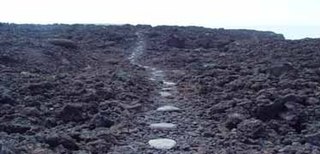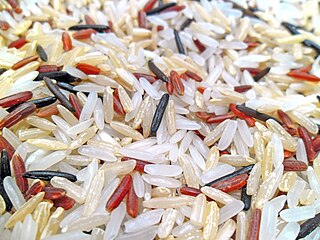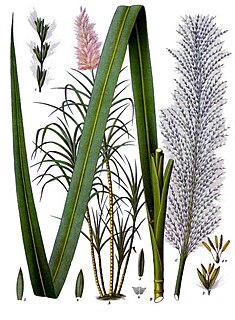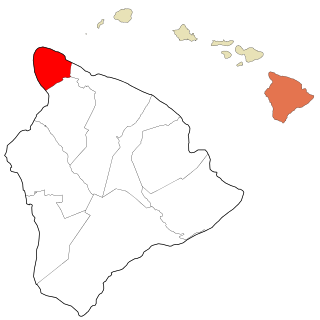Punaluʻu Beach is a beach between Pāhala and Nāʻālehu on the Big Island of the U.S. state of Hawaii. The beach has black sand made of basalt and created by lava flowing into the ocean which explodes as it reaches the ocean and cools. This volcanic activity is in the Hawaiʻi Volcanoes National Park. Punaluʻu is frequented by endangered hawksbill and green turtles, which can often be seen basking on the black sand.

Route 200, known locally as Saddle Road, traverses the width of the Island of Hawaiʻi, from downtown Hilo to its junction with Hawaii Route 190 near Waimea. The road was once considered one of the most dangerous paved roads in the state, with many one-lane bridges and areas of marginally maintained pavement. Most of the road has now been repaved, and major parts have new re-alignments to modern standards. The highway is mostly one-lane in each direction, but there are two lanes on the uphill portions. The highway reaches a maximum elevation of 6,632 feet (2,021 m) and is subject to fog and low visibility. Many rental car companies used to prohibit use of their cars on Saddle Road, but now allow use of the road. The highway experiences heavy use as it provides the shortest driving route from Hilo to Kailua-Kona and access to the slopes of Mauna Loa and the Mauna Kea Observatories.

Most Sacred Heart of Jesus Catholic Church in Hāwī, North Kohala, is an historic parish in the West Hawaii Vicariate of the Catholic Diocese of Honolulu. The parish campus includes an architecturally remarkable historic church, a rectory, a church cemetery, and a parish hall.

Kohala Historical Sites State Monument includes the National Historic Landmark Moʻokini Heiau and the birthplace of Kamehameha I. It is located in remote North Kohala on the Island of Hawaiʻi.

Hāpuna Beach State Recreation Area is a large park and sandy beach on the Big Island of Hawaii. The Hapuna Beach Prince Hotel is also located adjacent to the beach. Hāpuna is popular with residents and visitors.

Hāmākua is a district on the northeast coast of Hawaiʻi's Big Island, administered by the County of Hawaiʻi in the state of Hawaiʻi. It is also the name given for the coastline in the region, the "Hāmākua Coast".
Upolu Point is the most northern point on the island of Hawaiʻi in the Hawaiian Islands. It is an extruding landform created by cooled lava from an old eruption from Kohala volcano. The main town on the extrusion is Hawi, Hawaii about 2 miles (3 km) inland. The main road is Akoni Pule Highway t(Hawaii state route 270) which starts at the Hawaii Belt Road in Kawaihae, along the west coast of the point, and then through the towns of Hawi and Kapaʻau, ending at Pololū Valley. Upolu Point also overlooks Mahukona Harbor.

Waipiʻo Valley is a valley located in the Hamakua District of the Big Island of Hawaiʻi. "Waipiʻo" means "curved water" in the Hawaiian language.

Kohala Mountain Road, designated Route 250, travels upon the Kohala mountain on the island of Hawaiʻi in the state of Hawaii, United States.

Red Sand Beach on Kaihalulu Bay is a pocket beach on the island of Maui, Hawaii on Kaʻuiki Head.

Ala Kahakai National Historic Trail is a 175-mile (282 km) long trail located on the island of Hawaii. It is not yet a continuous "trail", but can be accessed at several broken segments along the coastline of the Big Island. The trail was established to access the traditional Ancient Hawaiian culture along with the natural geology of the island. The trail was established 14 November 2000 as a National Historic Trail which is managed under the National Park Service. The trail has received funds from the Land and Water Conservation Fund.

Richardson Beach is a Hawaii County park located just east of Hilo, Hawaii, on the Big Island of Hawaii. Adjacent is the Lele'iwi Beach Park.

The 1790 Footprints refer to a set of footprints found near the Kīlauea volcano in present-day Hawaii Volcanoes National Park on the island of Hawaiʻi. Resulting from an unusually explosive eruption, they are associated with a series of battles in the area in 1790.

The Bond District is a collection of historic buildings located in the district of North Kohala on the island of Hawaii. The district has three sections: the homestead of missionaries Ellen and Reverend Elias Bond (1813–1896), Kalahikiola Church, and the Kohala Seminary.

Kaunaʻoa Bay has one of the few white sand beaches of the Kohala Coast, the western side of the island of Hawaiʻi. A historic hotel, the Mauna Kea Beach Hotel, is located on beautiful Kauna'oa.
Waimanu Valley is a remote valley on the northeast coast of Hawaiʻi island. Besides the main Waimanu Stream, it includes Waihīlau Falls on a tributary.

Māhukona is a former settlement on the island of Hawaiʻi. The extinct submerged volcano Māhukona, off shore and to the south, is named for this area. The settlement was once the terminus of the Hawaiian Railroad.



























